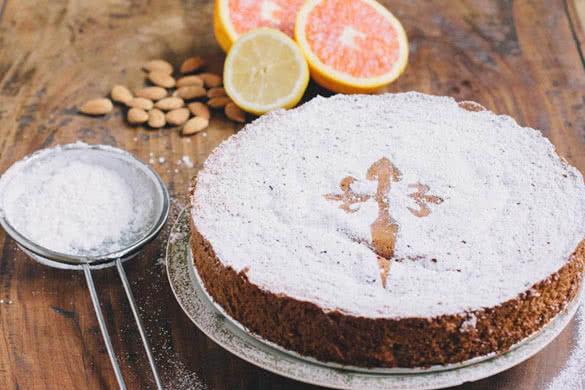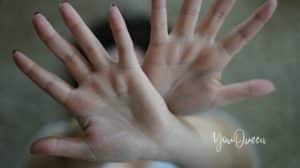After landing a job as a gluten-free confectioner, I decided to get some first-hand experience on what it feels like to follow a gluten-free diet. This is my experience.
I’m not coeliac or intolerant to gluten. In fact, I eat more carbs than what I’d like to admit and it is not unusual for gluten to appear in two or three of my daily meals (a biscuit in the morning and a little sandwich for lunch anyone?).
However, when starting a job as gluten-free confectioner, I decided to cut out any food containing gluten from my diet in order to understand better what you crave, what you avoid and to see if I felt any different.
I needed some rules: all products containing gluten as an ingredient were off limits; dishes that had a gluten containing element that could be removed (like the croutons on a Caesar salad) were also a no.
Naturally gluten-free foods without ‘Gluten Free’ on the label were okay, and so were products with the certified free from label. After 15 days, I reached the following conclusions:
1. You force yourself to think more about what you eat
I found myself constantly asking, “Does this have gluten?” before grabbing anything on the shelf. This also led me to ask, “Is this made without any harmful chemicals?” and “Is this too high in fat?” among other things.
2. Gluten is everywhere
Once, during the challenge, I accidentally ate a product containing gluten. Thinking that ice cream was a ‘no worries’ serve, I dug in only to find out that it was cheesecake flavored.
I realized that if I were seriously intolerant, I’d be feeling very ill right then, which was a very scary thought that people who follow gluten-free diets out of necessity face constantly. I’ll never again roll my eyes at anyone being extra careful with their food orders or asking a waiter lots of seemingly obvious questions.
3. Most gluten-free imitations are not the same
No matter how nice they look and how expensive they are, the majority of baked goods made with gluten-free mixes are very starchy and dense for my taste. These mixes tend to use corn flour, tapioca and potato starch as a big part of their content.
4. It’s better to look for naturally gluten free recipes
Instead of trying to recreate something I couldn’t have, I decided to focus on finding good alternatives. This lead me to find baked goods recipes from all around the world that were gluten free in their original version such as the Spanish Tarta de Santiago, Argentinian alfajores, flourless chocolate cake, etc.
If you still want to follow a gluten-free diet, you should start learning about which foods are acceptable and which are not.
Here is a short list to get you started.
5. Other cultures, other cereals
Most European cuisines rely so much on wheat that it’s very hard (or expensive) to make their staple recipes work without it. In Latin America, for example, wheat loses protagonism to corn or potatoes, and in Asia, rice if often the main cereal. So, Peruvian, Venezuelan, Japanese, Mexican and many other cuisines were a great source of delicious dishes and ideas.
6. Ultra refined flours and sugar are not good for you, no matter the type
If you are not allergic to gluten, switching to highly refined starches and foods with extra sugar and fat to enhance flavor is not very wise. After a few days of taking the challenge, I wasn’t feeling as great as everyone told me I would; in fact, I was feeling worse, and then I realized that many of the starchy substitutes I was having were likely the cause.
By the way, the first step toward eliminating refined sugar is to begin reading packaging labels very attentively. Always choose “sugar free” or “no sugar added” items.
Avoid items with ingredient names that finish in -ose. Sucrose, levulose, cellulose, dextrose, and fructose are all distinct types of sugar. They can be found in things you wouldn’t expect to find them in, such as ketchup, salad dressings, various sauces, drinks, and many other non-sweet foods.
Once I replaced them for wholemeal versions and more complex carbs, I was fuller for longer and feeling more energized. However, I feel that this also applies to wheat based products, so the key is more towards the processing of the cereal, rather than the type.
7. Lots of people who go gluten free are misinformed
I shared recipes and product suggestions with friends and acquaintances and soon realized how many people believe that a gluten-free diet can help them to lose weight or ease an upset stomach.
In reality, gluten-free products are not particularly light and can be high in fat and sugar (think of a milk chocolate bar, for example); besides that, cutting out gluten but still drinking alcohol or eating heavily spiced meals won’t make any non-intolerant tummy feel much better.
8. You can’t let your guard down
One weekend, I drank a glass of wine too many while still on the challenge. My friends, who were also a little tipsy, decided to make some food and prepared pasta. They served me a dish and I declined but not only my appetite had disappeared, so had my thirst. If I were truly allergic to something, I’d be afraid to have that extra glass and risk saying yes to that lovely gluten bomb.
9. Your family’s support is very important
If you can’t eat gluten and you live with a family member who can, their attitude will be a big help (or obstacle) to your success in avoiding this carb. The risk of cross contamination if a person in the house cooks with gluten is high, and in the most serious cases, this can bring very harmful consequences.
My husband wasn’t crazy about this gluten experiment of mine, but he was OK with keeping gluten out of the house (he still had pasta and bread when eating out) and this was definitively helpful.
It was an interesting challenge to do, and one that I learned a lot from.
Remember, gluten intolerance and other gluten-related disorders are difficult to diagnose, leaving the afflicted desperate for relief. Learn about gluten intolerance symptoms so that we can break the cycle of this terrible autoimmune condition.















Add Comment